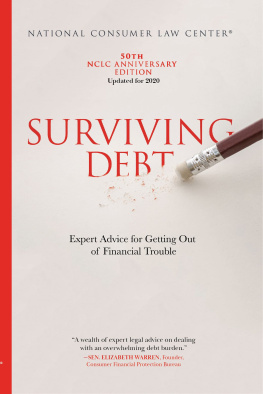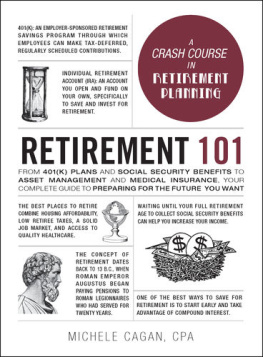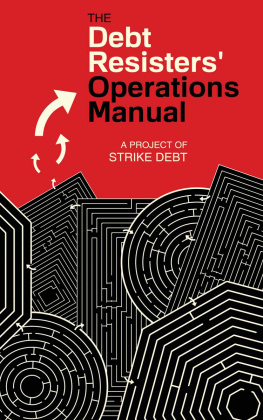Brett Williams - Debt for Sale: A Social History of the Credit Trap
Here you can read online Brett Williams - Debt for Sale: A Social History of the Credit Trap full text of the book (entire story) in english for free. Download pdf and epub, get meaning, cover and reviews about this ebook. City: Philadelphia, year: 2011, publisher: University of Pennsylvania Press, genre: Politics. Description of the work, (preface) as well as reviews are available. Best literature library LitArk.com created for fans of good reading and offers a wide selection of genres:
Romance novel
Science fiction
Adventure
Detective
Science
History
Home and family
Prose
Art
Politics
Computer
Non-fiction
Religion
Business
Children
Humor
Choose a favorite category and find really read worthwhile books. Enjoy immersion in the world of imagination, feel the emotions of the characters or learn something new for yourself, make an fascinating discovery.

- Book:Debt for Sale: A Social History of the Credit Trap
- Author:
- Publisher:University of Pennsylvania Press
- Genre:
- Year:2011
- City:Philadelphia
- Rating:3 / 5
- Favourites:Add to favourites
- Your mark:
Debt for Sale: A Social History of the Credit Trap: summary, description and annotation
We offer to read an annotation, description, summary or preface (depends on what the author of the book "Debt for Sale: A Social History of the Credit Trap" wrote himself). If you haven't found the necessary information about the book — write in the comments, we will try to find it.
Credit and debt appear to be natural, permanent facets of Americans lives, but a debt-based economy and debt-financed lifestyles are actually recent inventions. In 1951 Diners Club issued a plastic card that enabled patrons to pay for their meals at select New York City restaurants at the end of each month. Soon other charge cards (as they were then known) offered the convenience for travelers throughout the United States to pay for hotels, food, and entertainment on credit. In the 1970s the advent of computers and the deregulation of banking created an explosion in credit card useand consumer debt. With gigantic national banks and computer systems that allowed variable interest rates, consumer screening, mass mailings, and methods to discipline slow payers with penalties and fees, middle-class Americans experienced a sea change in their lives.
Given the enormous profits from issuing credit, banks and chain stores used aggressive marketing to reach Americans experiencing such crises as divorce or unemployment, to help them make ends meet or to persuade them that they could live beyond their means. After banks exhausted the profits from this group of people, they moved into the market for college credit cards and student loans and then into predatory lending (through check-cashing stores and pawnshops) to the poor. In 2003, Americans owed nearly $8 trillion in consumer debt, amounting to 130 percent of their average disposable income. The role of credit and debt in peoples lives is one of the most important social and economic issues of our age.
Brett Williams provides a sobering and frank investigation of the credit industry and how it came to dominate the lives of most Americans by propelling the social changes that are enacted when an economy is based on debt. Williams argues that credit and debt act to obscure, reproduce, and exacerbate other inequalities. It is in the best interest of the banks, corporations, and their shareholders to keep consumer debt at high levels. By targeting low-income and young people who would not be eligible for credit in other businesses, these companies are able quickly to gain a stranglehold on the finances of millions. Throughout, Williams provides firsthand accounts of how Americans from all socioeconomic levels use credit. These vignettes complement the history and technical issues of the credit industry, including strategies people use to manage debt, how credit functions in their lives, how they understand their own indebtedness, and the sometimes tragic impact of massive debt on peoples lives.
Brett Williams: author's other books
Who wrote Debt for Sale: A Social History of the Credit Trap? Find out the surname, the name of the author of the book and a list of all author's works by series.










 7.5 trillion owed in consumer debt in 2001. By 2003, our personal debt amounted to 130 percent of our disposable income, up by nearly one-third since 1995.
7.5 trillion owed in consumer debt in 2001. By 2003, our personal debt amounted to 130 percent of our disposable income, up by nearly one-third since 1995.